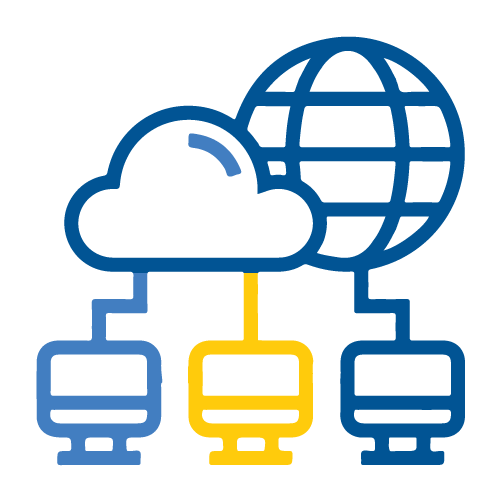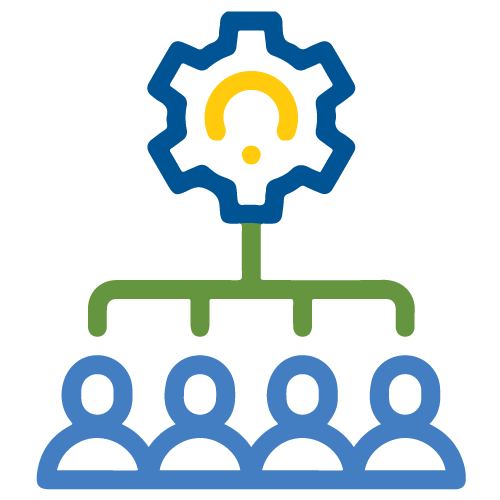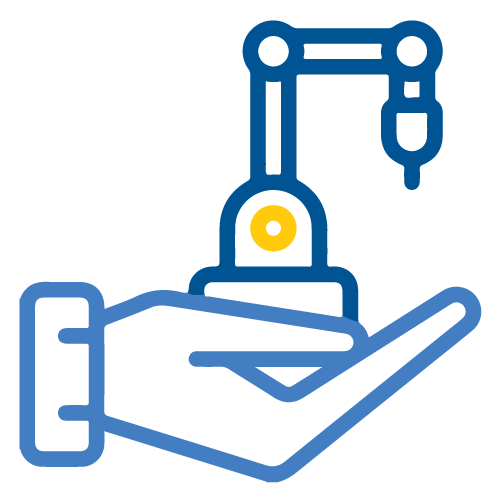
The rise of the industry-specific Cloud: Here’s everything you need to know
Curated by: Sergio A. Martínez
At some point in the past, software companies had to rely on complex and often expensive hardware infrastructure to operate and deliver their products to customers. This, of course, made it difficult for new companies to enter the market, while limiting the ability of existing companies to scale up their operations, essentially acting as a barrier that stifled innovation. Cloud computing changed all of that. By allowing companies to manage their products and operations remotely, cloud technology leveled the playing field, introducing the concept of “As-a-service” that had a profound impact on the technology sector, and is likely to keep shaping the market in the years to come.

However, what’s next for cloud computing? Now that this technology has become a linchpin for many companies, businesses, and industries, the evolution of the cloud is starting to take shape, and 2023 is likely to be a year when the adoption of these platforms and tools will take their biggest step yet.
And the main reason is that a new era of possibility is dawning; while cloud computing is allowing businesses to scale their operations quickly and efficiently, without having to invest in expensive new hardware or software, offering new ongoing business models, there’s no one-size-fits-all solution. Emerging trends like the Metaverse, cloud gaming, and AR, among many others, have specific needs and challenges that demand a different angle.
That’s why industry-specific cloud solutions will be such a game changer for businesses, but what will this future look like? What is the future of cloud computing, and what can we expect to see in the coming 2023?
The sky is the limit

Microsoft, for example, is already pushing the envelope of what this technology can do, experimenting with the possibilities of cloud computing with applications like the most recent entry in their Flight Simulator series. This entry on the 40-year-old franchise implemented Microsoft’s Azure technology, among others, to render a real-time map of the whole Earth, enabling players to visit pretty much any place on the planet with a precision and fidelity unheard of before, even duplicating the real-life weather conditions and air traffic of every place you want to visit. Realistically, handling this amount of information would be impossible for a user to do locally, which demonstrates the capabilities of cloud computing when applied to a specific end. As explained in the Game Developer article we liked above:
“It’s a complex process with many moving parts, and what’s more fascinating about this technical feat is that Microsoft and development lead Asobo Studio in France were relying on cloud infrastructure that did not fully exist when work on the game began in 2016. […] At the start of development, there were three main challenges: storing, processing, and streaming the world of Flight Simulator. Storage wasn’t so much of an issue–there’s plenty of room in the cloud–but the efficiency of processing and streaming would depend on future expansion of Azure datacenters.”
This push in the implementation of cloud technology was not only a literal game-changer but also a first step into showing how an industry-specific application of cloud computing can bring all kinds of advantages for companies and organizations looking to implement these tools into their operations. From easy examples like healthcare organizations taking advantage of cloud-based patient records and telemedicine solutions, retailers using the cloud to manage inventory and customer data, or manufacturers connecting disparate machines and systems into a single whole, there are also obvious advantages like implementing certifications, processes, practices, and regulations that not only can vary a lot from one industry to the next but also have not shared functionality whatsoever.
“Vertical software is far from a new idea and bringing this kind of specialization to the cloud is actually a sign of the maturity of SaaS. It’s now powerful enough that services can be customized and interconnected to deliver not just the generic workflows that every business uses, but the very specific requirements of different industries”, says this analysis by TechRepublic. “An industry cloud has a common data model, cross-cloud connectors and APIs, plus workflows, components, standards and certifications for that industry that are used to create different modules that customers can choose.”
In a world where generic off-the-shelf software solutions are the norm, it can be easy to forget that every business is unique. One size does not always fit all, and that’s why industry-specific cloud-computing customization will become increasingly popular in the coming years, with businesses seeking out software that is tailored to their specific needs. And theoretically, industry-specific customization services can provide a higher level of security and compliance with industry regulations. As businesses become more aware of the benefits of industry-specific clouds, demand for these services will continue to grow.
The risk of the intangible

However, this doesn’t mean that this transition will be easy, or that it will not bring concern and challenges when it comes to reliability and cybersecurity. Anytime you outsource something as important as your company’s data storage, you’re exposing yourself to a certain amount of risk. And when you move your operations into a purely cloud-based environment, those risks can increase exponentially. Here are just a few of the potential dangers any organization needs to be aware of:
- First and foremost, cloud computing involves placing a lot of trust in the hands of a third-party provider. If their infrastructure suffers any disruption, or if they experience any kind of security breach, your business could be seriously impacted, especially if an industry-specific standard makes it difficult to migrate operations elsewhere.
- A business might also lose a certain degree of control over its data. When it’s stored on their own premises, the organization can physically secure it and restrict access to it as they see fit, but in the cloud, relying on the security measures of your provider is obligatory.
- Finally, you need to be aware of the possibility of data loss. Even with the most reliable providers, there’s always the chance that data could be corrupted or lost due to hardware failure or human error.
And this is without mentioning how an effective cloud implementation would require clear standards and guidelines to be properly used; after all, if an industry vertical standard exists, developing a solution that is not compatible with such could limit the appeal of the solution to potential users within that industry. Furthermore, if an industry-specific solution is not well adopted, the sunk costs associated with development and deployment may never be recovered. And that’s without mentioning that, by definition, an industry-specific solution is less likely to be adopted by a broad base of users, which could limit its long-term viability. However, the competitive and operational advantages of an industry-specific cloud computing solution could be enough to offset this.
For now, the future seems bright. The technology sector has become diverse enough that the development of industry-specific cloud computing solutions will become a necessity going forward. And as businesses increasingly move their operations and data to the cloud, they will require tailored solutions for their specific needs. As the cloud computing market matures, it is clear that the development of industry-specific solutions will be the key to success for the technology sector.
The Key Takeaways
- One of the biggest technological steps of the last two decades was the development of cloud infrastructure and computing.
- Not only has this technology changed how we deploy products and ushered in the age of “As-as-Service” options, but also helped the tech sector to break away from local constraints.
- However, the diversification of applications, solutions, and technological needs means that a “one-size-fits-all” approach might not be enough.
- That’s why 2023 will bring a new paradigm of industry-specific cloud computing technology, closing on the needs of individual sectors.
- Although these platforms present a challenge (in standards and security), the advantages outweigh the risks, and soon will see a big jump in these kinds of cloud computing applications.
Scio is an established Nearshore software development company based in Mexico that specializes in providing high-quality, cost-effective technologies for pioneering tech companies. We have been building and mentoring teams of engineers since 2003 and our experience gives us access not only to the knowledge but also the expertise needed when tackling any project. Get started today by contacting us about your project needs – We have teams available to help you achieve your business goals. Get in contact today!

















